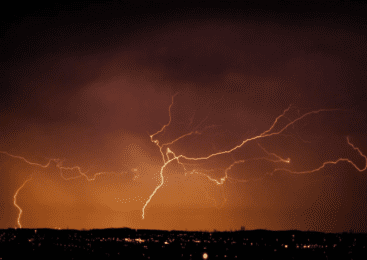The FCC and the National Telecommunications and Information Administration are locked in a battle with the National Oceanic and Atmospheric Administration and NASA over sharing spectrum used by satellites for weather forecasting with 5G wireless communications, according to Scientific American. But a report from the Government Accounting Agency, released July 20, took a pragmatic approach to the issue.
The GAO told the agencies, essentially, they need to get along and work more closely to address interference issues, Inside Towers reported. That’s a major conclusion of the document titled, “Spectrum Management: Agencies Should Strengthen Collaborative Mechanisms and Processes to Address Potential Interference.”
The key band of contention appears to be 24 GHz. The FCC auctioned 2,909 100-megahertz of partial economic area licenses for 5G in that band in 2019.
“Federal agencies are competing with one another over radio waves used to help predict changes in the climate as the sky is increasingly cluttered with noise from billions of smartphones,” the publication said.
Organizations representing each side have, not surprisingly, found opposing viewpoints on the interference issue.
National Center for Atmospheric Research Associate Director William Mahoney told the House Committee on Science, Space, and Technology on July 20 that the United States must protect radio frequencies that are essential for weather forecasts and understanding the climate system.
“At a time of increasing weather hazard vulnerability, it is imperative that critical Earth observations be protected from interference,” Mahoney said in his prepared remarks. “The impact of lost Earth observing data could be catastrophic for the nation.”
CTIA claimed that NOAA’s fear about weather forecasting degradation is based on a study of a sensor – known as the Conical scanning Microwave Imager/Sounder – which was canceled in 2006.
“Claims that 5G in the 24 GHz band will decrease the accuracy of weather forecasts are simply not true. All available evidence shows that existing interference rules are proven to protect the collection of weather data,” said Nick Ludlum, CTIA Senior Vice President & Chief Communications Officer.
The disagreement over sharing 24 GHz spans back to 2019, when preparing for the World Radiocommunications Conference (known as WRC2019), the FCC, NTIA, NOAA and NASA failed to agree on how to protect instruments on weather satellites from interference from 5G wireless signals in the 24 GHz spectrum band, according to the GAO, which called the efforts to agree on a 24 GHz position “highly contentious.”
“Consequently, the United States did not reach agreement on key technical contributions to submit to international technical meetings for the [2019 WRC] conference, creating challenges for the United States’ ability to present either a unified position or an agreed-upon technical basis for the conclusions the United States ultimately supported,” the GAO said.
With WRC2023 coming up, the GAO was tasked by Congress with improving inter-agency cooperation to, hopefully, avoid the troubles that arose during the WRC2019 preparations. GAO found in its report that, although the agencies employ coordination to address potential spectrum interference, gaps exist that have hampered NOAA’s and NASA’s efforts to protect their satellite instruments from potential interference. Those gaps may negatively affect future spectrum management, according to GAO, which made several recommendations to FCC, NTIA, NASA and NOAA to increase their collaboration.
“Both the Chair of FCC and the NTIA Administrator [need to] establish clearly defined and agreed-upon processes for making decisions on spectrum-management activities that involve other agencies, particularly when consensus cannot be reached,” according to the GAO report. Additionally, procedures need to be established to guide the design of spectrum-sharing and potential-interference studies intended as U.S. contributions to WRC technical meetings.
By J. Sharpe Smith Inside Towers Technology Editor





Reader Interactions